
Apantesis is a genus of tiger moths in the family Erebidae first described by Francis Walker in 1855. They are found in North and Central America.

The brown-dotted clothes moth is a species of tineoid moth. It belongs to the fungus moth family (Tineidae), and therein to the nominate subfamily Tineinae. It is the type species of its genus Niditinea.

Speyeria, commonly known as greater fritillaries, is a genus of butterflies in the family Nymphalidae commonly found in North America, Europe, and Asia. Some authors used to consider this taxon a subgenus of Argynnis, but it has been reestablished as a separate genus in 2017.
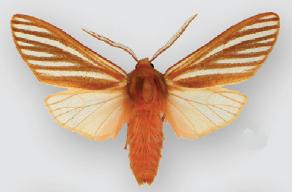
Pseudohemihyalea is a genus of moths in the family Erebidae described by Régo Barros in 1956. While the caterpillars of most species of Pseudohemihyalea feed on broad-leaved trees, the P. ambigua group has larvae that feed on conifers. Their forewing coloration has accordingly evolved to light-and-dark lengthwise striping, giving better camouflage among the slim needles of the host plants. In this, they seem to be convergent to certain geometer moths, such as Caripeta piniata or Sabulodes niveostriata.

Catocala junctura, the joined underwing or Stretch's underwing, is a moth in the family Erebidae. The species was first described by Francis Walker in 1858. It is found throughout temperate North America, ranging from New York and Pennsylvania west to Montana, Colorado, Oklahoma, Arizona, and into Texas, and north to southern Illinois, extreme southern Alberta and Saskatchewan; it has also been recorded west of the Rocky Mountains from California and south-eastern British Columbia. It is typically found near water, where the food plants of its caterpillar larvae grow plentifully.
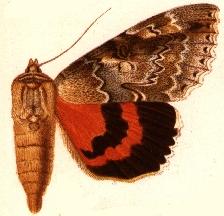
Catocala marmorata, the marbled underwing, is a moth of the family Erebidae. The species was first described by William Henry Edwards in 1864. It is found in the United States from Vermont to South Carolina and west to Indiana and Illinois.
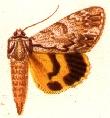
Catocala gracilis, the graceful underwing, is a moth of the family Erebidae. The species was first described by William Henry Edwards in 1864. It is found in North America from Manitoba to Nova Scotia and Maine, south through Connecticut, New Jersey to Florida and west to Mississippi and Missouri.

Catocala similis, the similar underwing, is a moth of the family Erebidae. The species was first described by William Henry Edwards in 1864. It is found in North America from Ontario and Quebec south through Maine and Connecticut to Florida, west to Texas and Oklahoma, and north to Minnesota.

Satyrium edwardsii, the Edwards' hairstreak, is a species of butterfly in the family Lycaenidae. It is found in the eastern parts of the United States and in the southern parts of the Canadian provinces from Saskatchewan to Quebec.

Lophocampa maculata, the Yellow-spotted tussock moth, mottled tiger or spotted halisidota, is a moth of the family Erebidae and the tribe Arctiini, the tiger moths. The species was first described by Thaddeus William Harris in 1841. It is found across Canada, the western parts of the United States, south in the Appalachians to South Carolina and Kentucky. They are also found in Southeastern Alaska.
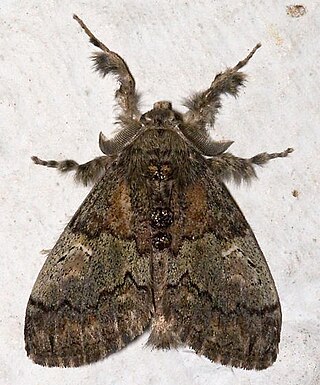
Dasychira basiflava, the yellow-based tussock, is a moth of the family Erebidae. The species was first described by Alpheus Spring Packard in 1865. It is found in North America from Massachusetts and southern Ontario west to Iowa, Texas, south to South Carolina and possibly Florida. It is also found in Southeastern Alaska.

Speyeria coronis, the Coronis fritillary, is a butterfly of the family Nymphalidae of North America. It is common from Baja California to Washington and east to Colorado and western South Dakota and once reported in Alberta.
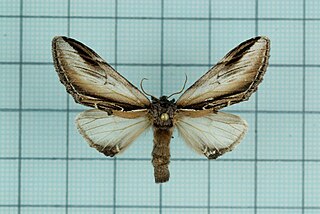
Pheosia rimosa, the black-rimmed prominent moth, fissured prominent or false-sphinx, is a moth of the family Notodontidae. The species was first described by Alpheus Spring Packard in 1864. It is found from coast to coast in North America, although it is less common in the south-eastern United States.
Digrammia subminiata, the vermillion granite or dark-waved angle, is a moth of the family Geometridae. The species was first described by Alpheus Spring Packard in 1873. It is found in western North America from British Columbia to Manitoba, south through Colorado to Arizona and California.
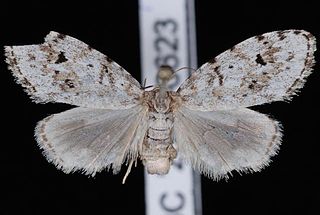
Clemensia albata, the little white lichen moth, is a moth of the family Erebidae. It was described by Alpheus Spring Packard in 1864. It is found in eastern North America, west across boreal Canada to south-eastern British Columbia. The range extends along the Pacific Coast south to Monterey Bay in west-central California. The habitat consists of moist forests, including coastal rainforests, oak woodlands and mixed hardwood forests.
Ectypia clio, the Clio moth or Clio tiger moth, is a moth of the family Erebidae. It was described by Packard in 1864. It is found in California and from south-western to western Nebraska and Texas. It is also found in Arizona, Utah, New Mexico and Colorado. The habitat consists of lowland areas, where it is found along creeks and rivers and in agricultural and urban areas.
Pseudohemihyalea splendens is a moth in the family Erebidae. It was described by William Barnes and James Halliday McDunnough in 1910. It is found from south-eastern Arizona in the US to Mexico.
Pseudohemihyalea labecula, the freckled glassy-wing, is a moth in the family Erebidae. It was described by Augustus Radcliffe Grote in 1881. It is found in the United States in southern Nevada, Utah, from Colorado to Arizona, New Mexico and western Texas.
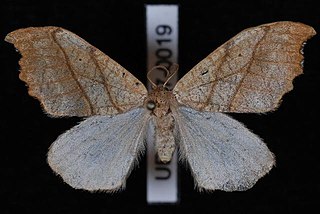
Falcaria bilineata, the two-lined hooktip moth, is a moth in the family Drepanidae. It was described by Packard in 1864. It is found in North America, where it has been recorded from Newfoundland to New Jersey, west to Oregon and north to British Columbia. The habitat consists of deciduous woodlands.











